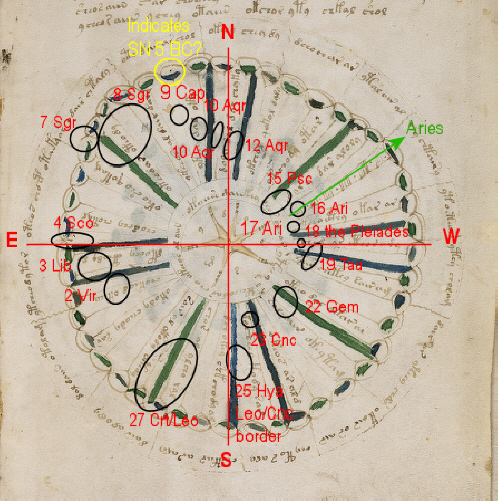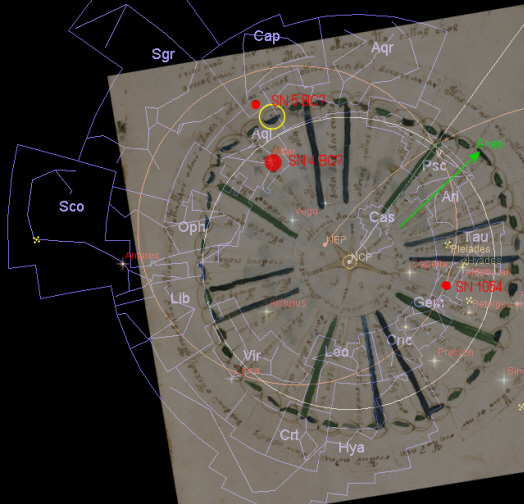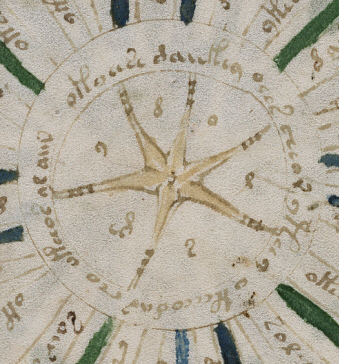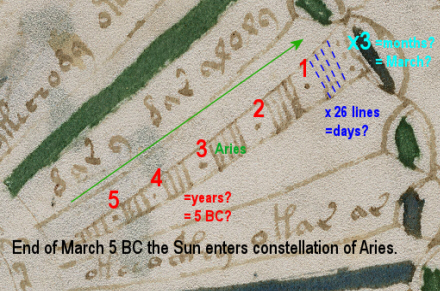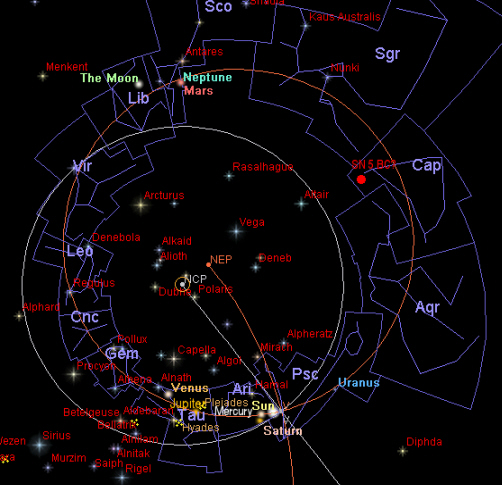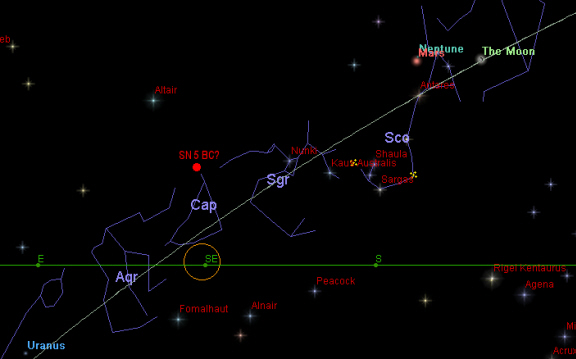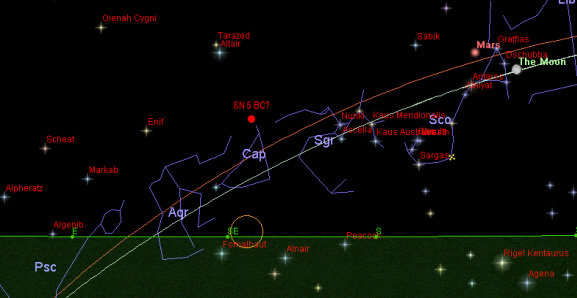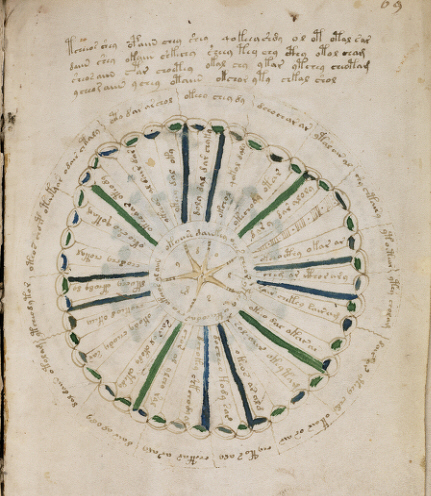 |
| f69r, Voynich Manuscript. Credit: Beinecke Rare Book and Manuscript Library, Yale University. |
This share similarities of structure with f67v suggesting it may be based on a Lopan and it also has 16 divisions around the outside suggesting compass directions though not all of equal size, but the areas of the sky divided up by constellations are not equal either. In this case the radiating stripped and dotted segment at 2 O'clock corresponds roughly with the Pisces Aries border and the start of the Western Zodiac. The single green and double blue spokes line up roughly with the main cardinal points although the colouring is not very precise. Below is the folio with main cardinal points, Lunar Mansions and their corresponding Western constellations that occur near to the blue and green spokes. There is a small dot at 11.30 O'clock that corresponds well with the Lunar Mansion location of SN 5 BC?
|
|
| f69r, Voynich Manuscript. Credit: Beinecke Rare Book and Manuscript Library, Yale University. Overlay by P. Han comparing the coloured, striped/dotted spokes of the image to lunar mansions as indicated on the Lopan by Dr. David B. Kelley. The dot at 11.30 O'clock is also indicated. |
Below is a general North Pole centred star map shown in relation to the folio and the Lopan and how they may correspond to highlight SN 5 BC? (which may have been the same event as recorded in 4 BC? in Aquila). SN 1572, SN 1604 and even SN 1054 do not appear to be indicated in the general folio although the central star image, I would suspect would most likely be SN 1054 if not SN 5 BC?
|
|
| f69r, Voynich Manuscript. Credit: Beinecke Rare Book and Manuscript Library, Yale University/Credit: Redshift6. North Pole centred star map, 26/3/5/BC, North China. Overlay by P. Han indicating the position of SN 5 BC?, SN 4 BC?, SN 1054 and the green arrow marking the position of the start of the constellation Aries. |
The central part of the image is interesting and has letters around the spokes of the star, as an interpretation of SN 1054 "stella nova rubens (red)" or "Stella nova Seres (Chinese)" would be the most logical possibilities, but Taurus does not appear to be the main subject matter of the folio. It may also be interpreted among other things as " New star of Israel" or " Israel revealed", and the star has 6 spokes which would be appropriate for such an interpretation.
|
|
| Central star image. f69r, cropped, Voynich Manuscript. Credit: Beinecke Rare Book and Manuscript Library, Yale University. |
